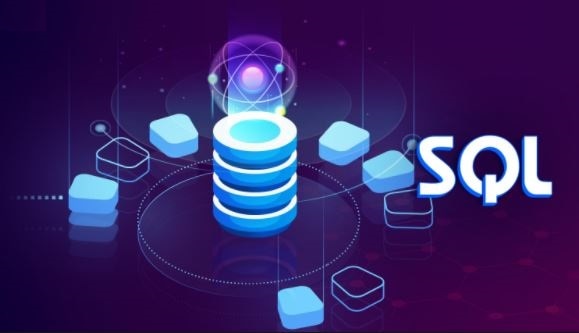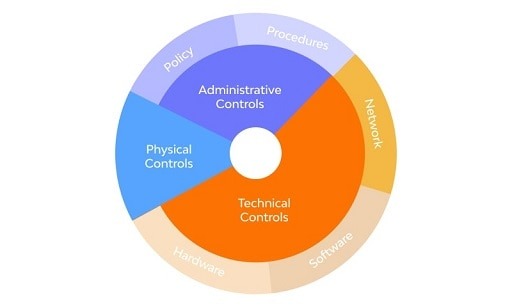With customizable databases, organizations tend to position themselves with improved competitiveness and cost optimization. You can find online database software the best tool to create database applications to help businesses meet the increasing challenges in database management, volume data handling, and analytics.
The non-technical folks also need to handle critical data as if they are experts, and so the database applications you choose to be made user-friendly and flexible to work for all alike.

When choosing enterprise databases, it is very easy for the decision-makers to get lost in many definitions and choices. In addition, a beginner will hear a lot of confusing terminologies such as queries, SQL, tables, and records to have their head spin. Therefore, this article will discuss some of the fundamental aspects you must know while considering choosing and implementing an online database application for enterprise database management.
The purpose databases serve
At the baseline, the database is the gathering of data or information, which is stored on a server. Then, you must try to organize the day so that the end-user can easily access, retrieve, edit, or update it as and when needed. Sometimes, this data may be something very simple, like the personal info of customers. It may be more critical information, like the credit card details of a customer or so. Data can be in any format, as it may be inventory, sales details, calls, to even images.
You may also like: Does the DBCC CHECKDB Repair Options Ensure Complete Recovery
While using a database, you do not have to store the data on your local machine but somewhere on a third-party server or cloud. Using a good database management system, or DBMS, you can query this DB stored on another server to retrieve your needed information.
This part interacting with the DB is called the backend of applications. To present the data in a consequential manner to the end-users, the developers create a web interface or a website to manage the database applications. This interface is called the front-end.
There are various database models, such as network or hierarchical models, relational and nonrelational models, etc., which are very common. The relational database model was first developed in the 1970s and is still the dominating model in DBMS.
You can store data in the form of interrelated tables consisting of columns and rows. To access data in a relational database, you use a relational database management system or RDBMS. To find the most suitable database management model for your enterprise, you may consult with RemoteDBA.com. Further, let us explore a few popular database management models.
The classic SQL: Online Database Software
Among various database applications in use now, SQL is one of the languages most IT experts now use. These interactions are known as database transactions. To be more accurate and efficient, the transactions need to have ACID properties, which means transactions should be atomic, consistent, isolated, and durable (ACID).
- Atomic means that the transaction is run in full or nothing.
- Consistency refers to the consistent state of the database before and after each transaction.
- Isolation means all the transactions run independently of one another.
- Finally, durability is the concept that you cannot undo a transaction after it is successful.
A real-time example of ACID properties can be seen in the banking system. For example, if you transfer money from your account to another one. There will be a series of queries and calls to transfer the money from one account to another.
- If such a call fails, the transactions will not be completed (atomic)
- The transactions do not come after one another and do not change any information in each of the accounts (consistency)
- Each call is related to only one transaction at a time (isolation).
- Once the transaction is done successfully, you will not be able to undo it (durability).
Some of the best RDBMS that use SQL for creating and querying databases are MySQL, Oracle, IBM DB2, Microsoft Access, etc. The major applications of SQL databases are in banking systems, medical records, online shopping, etc.
Advantages of SQL: Online Database Software
- A proven language that has been in practice for 49+ years.
- A great solution for storage on servers and not on hard drives.
- The best solution for using structured data and transactional DBs.
- Allowing querying the entire database
- Encourage relations between database tables.
- Multiple users can access it at the same time.
Disadvantages of SQL
- Needed high expertise and programming skills. Big learning curve.
- If the database is poorly designed or data is unstructured, it ends up in poor data management
- It cannot be scaled out easily and cost-effectively.
- Not the ideal solution while dealing with the exponentially growing amount of data like social media.
NoSQL and NewSQL: Online Database Software
NoSQL database refers to a language system that does not use SQL. It is also most useful for unstructured data where the database’s ability to create or access a huge volume of data is necessary. NoSQL also offers greater flexibility with some alternative data models, such as relational data and unstructured documents.
A good thing here is that it does not bother with real-time data access. You can still access the version of the data as it was not updated yet. Online Database Software
Compared to the above examples of database applications, NoSQL is less rigid than the transactional structure of SQL. It also does not respect ACID properties as SQL. The top NoSQL database systems are MongoDB, Redis, Couchbase, etc.
You may also like: What is ERP? Key Features of Top Enterprise Resource Planning Systems
NewSQL is another database system that can be referred to as a modern relational DBMS language. It is based on the relational DB model and uses SQL query language but can offer better consistency than NoSQL. Some of these NoSQL databases also offer very solid ACID properties.
Advantages of NoSQL and NewSQL
- Very quick
- Do not require any fixed table schemas
- Can scale up horizontally
- It offers a stronger consistency
- Full-level transactional support possible (NewSQL)
Disadvantages of NoSQL and NewSQL
- Not transactional or ACID (NoSQL, but NewSQL is ACID compliant)
- It may sometimes get messy
- Do not offer any development tools like SQL (NewSQL)
I hope this discussion helped in understanding database applications and DBMS as well as languages. With the examples of database applications we discussed, you may evaluate your data management requirements in hand and identify the most suitable solution for you.
Would you like to read more about Online Database Software-related articles? If so, we invite you to take a look at our other tech topics before you leave!
![]()












